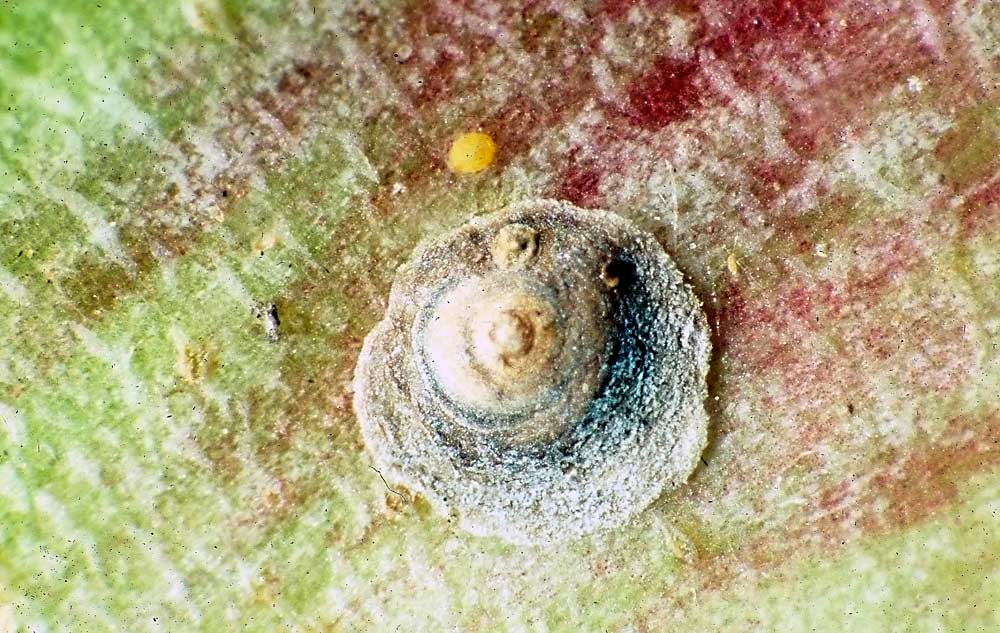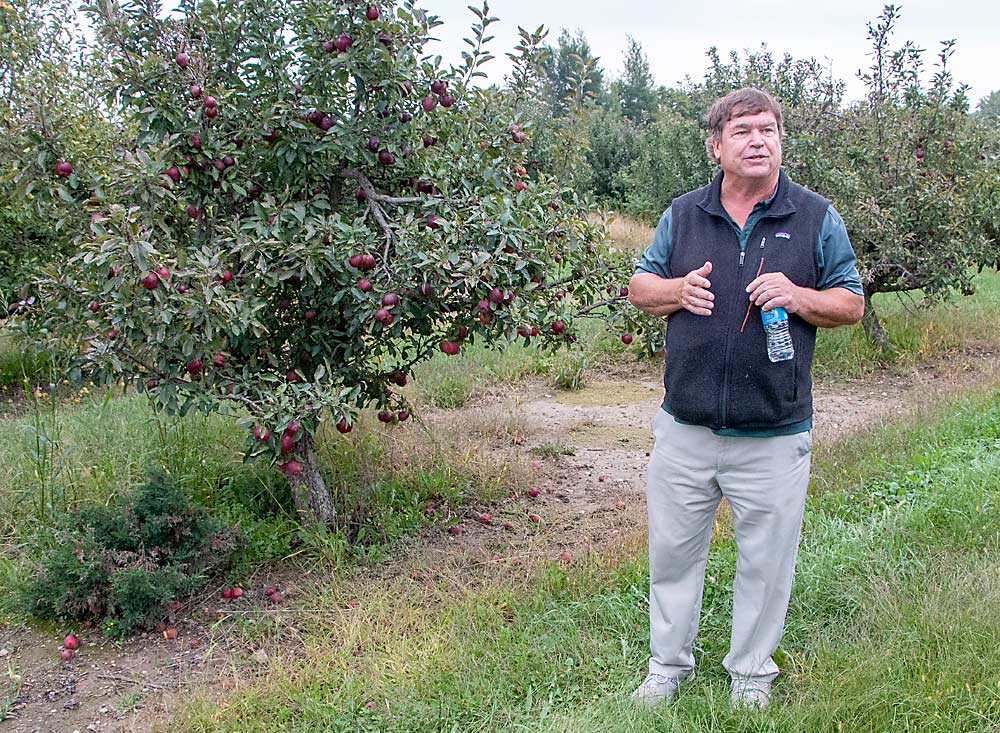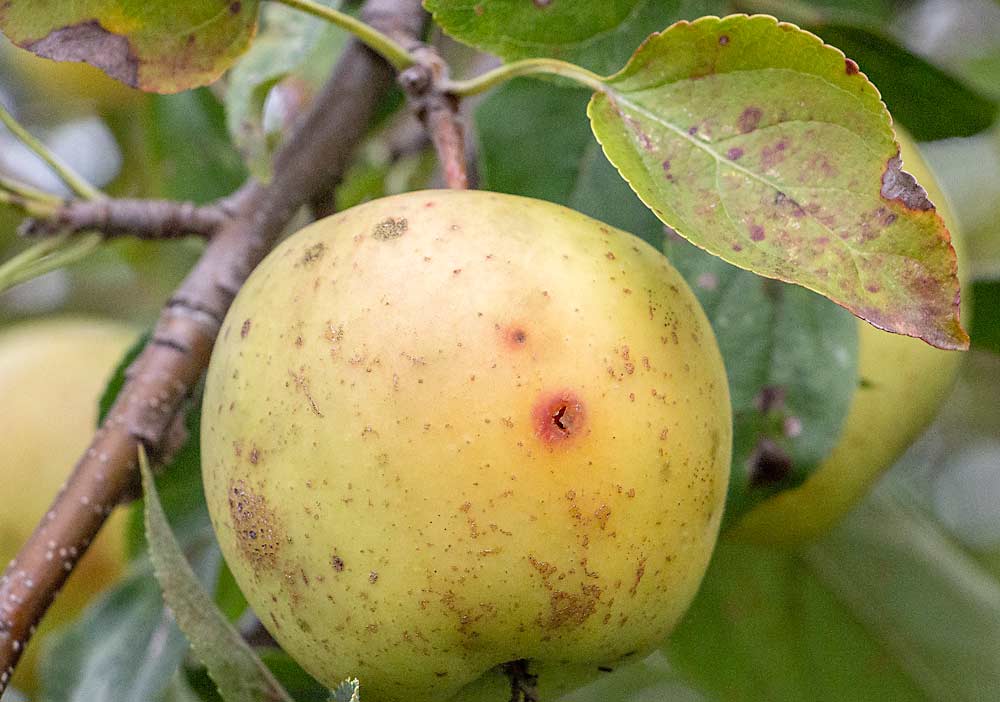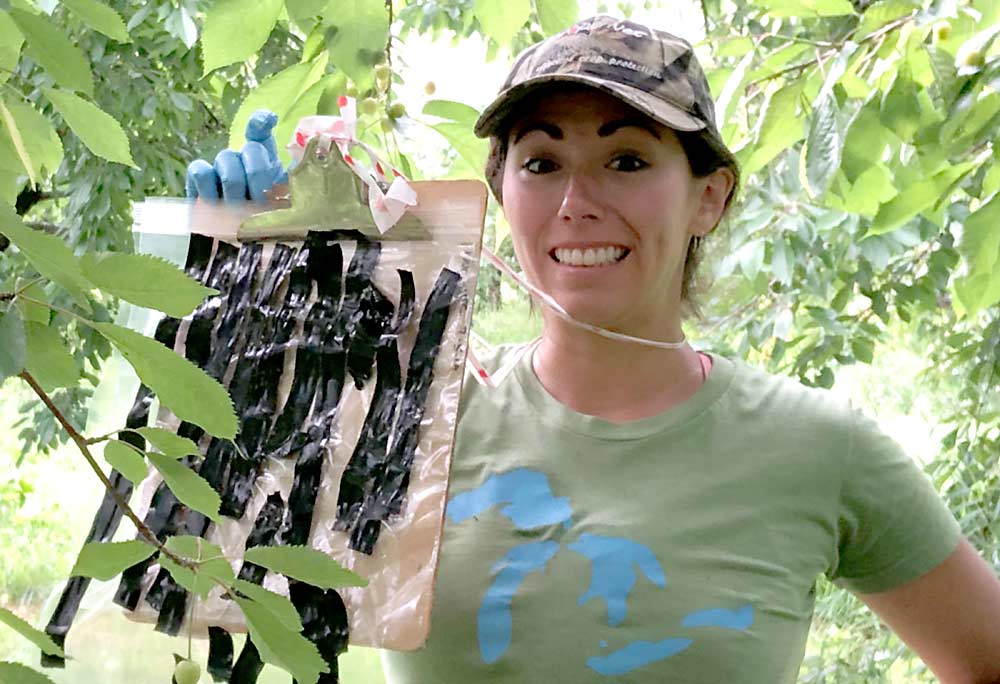
Michigan apple and sweet cherry growers report increasing problems with San Jose scale. The insect has killed limbs on sweet cherry trees in Northwest Michigan, in addition to damaging fruit on apple trees in West Central Michigan.
Insecticides can work as a means of control, but, as always, that’s an expensive solution. Growers traditionally have controlled scale with dormant oil sprays but are using that option less frequently now, perhaps because it’s more expensive than it used to be and new regulations limit the more effective compounds, said Larry Gut, a professor and specialist in integrated pest management in tree fruit with Michigan State University Extension.
Gut, who’s spent most of his career studying pheromone-based mating disruption, thought the technique might work well against San Jose scale, so he decided to study its use in apple and cherry orchards. A fellow MSU Extension educator, Emily Pochubay, decided to study mating disruption in sweet cherries farther north.

In 2019, Gut and his team ran the first trials in North America using pheromone-based mating disruption on San Jose scale in apples and cherries. His trials were held at MSU’s Trevor Nichols Research Center and at a commercial orchard on the Fruit Ridge, north of Grand Rapids.
Experimental twist-tie dispensers that release San Jose scale pheromones were provided by Shin-Etsu Chemical Co. The dispensers are not yet commercially available, Gut said.
Male San Jose scale insects don’t fly far — maybe a few trees’ distance at the most — and females don’t fly at all. The females stay in place, luring the males with their pheromones. The females lay eggs, which hatch into juvenile crawlers. The first generation of crawlers emerges around June and starts feeding on trees. The second generation emerges in late August or early September and starts feeding on apples as they ripen, Pochubay said.
When Gut started placing the twist-tie dispensers in trees, he guessed that the pheromones released by the dispensers would overwhelm the males, “frying their brains” to the point where they couldn’t find any females. What the dispensers actually did was lay a “false trail,” competing with the females for the attention of the males, he said.

Regardless of how it happened, however, the dispensers seemed to work. The first-year results at Trevor Nichols showed promise, though the population of San Jose scale was so huge that it “overwhelmed” the experiment, he said. Mating disruption techniques typically work best with less pest pressure. Gut wants to repeat the experiment next year, but in a research center orchard with a much lower scale population.
In the commercial orchard — where they hung about 200 dispensers per acre in five different blocks — traps showed a more than 90 percent reduction of San Jose scale. The original pest population wasn’t as high as they’d hoped, however, because the grower had applied an early season insecticide that proved to be very effective. Gut would like to repeat that experiment, too, in a less effectively sprayed orchard.
When ready for commercial release, Gut would like to see dispensers with pheromones for both San Jose scale and codling moth. That would be more efficient, as codling moth and scale adults emerge at the same time, and would save growers money, he said.
Overall, Gut was pleased with the early results.
“Where San Jose scale pressure was normal, it looked excellent,” he said, adding that mating disruption “looks fantastic in cherries.”

Like Gut, Pochubay started experimenting with pheromone disruption of San Jose scale in 2019. She said the insect has become more and more problematic in Northwest Michigan sweet cherry orchards, especially older orchards. The insect sucks the sap out of wood, killing branches and forcing growers to remove the infested wood and lose yields.
Working with five different growers with known infestations, Pochubay’s team placed two dispensers in each tree in the treated plots. They set them up before bloom, just before the males start flying. Two dispensers per tree seemed to do the trick: They found fewer males in the traps in the treated plots, she said.
“The first year of data looks promising,” she said. “We hope to replicate it next season.”
—by Matt Milkovich
Related:
—San Jose scale scuffle in Michigan






Leave A Comment